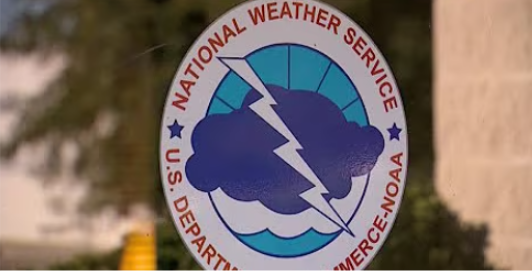Weather alerts return in multiple languages after brief pause—here’s why it matters
- Replies 0
When extreme weather strikes, clear communication can mean the difference between safety and danger.
But for millions of Americans who don’t speak English at home, that information isn’t always easy to access.
After a brief and concerning pause, the National Weather Service (NWS) is bringing back a vital tool to bridge that gap—and it couldn’t have come at a better time.
The National Weather Service, under the National Oceanic and Atmospheric Administration (NOAA), has announced it will resume providing translations of weather alerts and forecasts for non-English speakers.
The service had paused briefly after its contract with translation provider Lilt expired, prompting concern from experts about the risk this posed during severe weather events.
The good news: the contract has been reinstated.

Translations will resume by the end of the day Monday, restoring access to critical weather information for millions who rely on it.
According to Census data, nearly 68 million people in the US speak a language other than English at home—42 million of whom speak Spanish.
During a hurricane, wildfire, or heatwave, every second counts. Without understandable alerts, many could miss life-saving information.
These translations are now available in Spanish, Chinese, Vietnamese, French, and Samoan.
They don’t just help during emergencies—they also support industries like tourism, transportation, and energy, where daily forecasts can shape key decisions.
In late 2023, Lilt, an AI translation company, began providing language services to the NWS.
The move came after manual translations proved too time-consuming and unsustainable.
With AI, alerts and forecasts can be delivered faster and more efficiently—an important improvement when time is of the essence.
The translation service is part of the NWS’s broader mission to serve all Americans, even as federal agencies like NOAA have faced budgetary pressure.
Experts say the resumption of translations is a strong step toward equity and preparedness, especially in an era of more frequent and extreme weather events.
Read next:

Have you or someone in your community ever struggled to understand a weather alert? What other services should be translated to ensure public safety? Drop your thoughts in the comments.
But for millions of Americans who don’t speak English at home, that information isn’t always easy to access.
After a brief and concerning pause, the National Weather Service (NWS) is bringing back a vital tool to bridge that gap—and it couldn’t have come at a better time.
The National Weather Service, under the National Oceanic and Atmospheric Administration (NOAA), has announced it will resume providing translations of weather alerts and forecasts for non-English speakers.
The service had paused briefly after its contract with translation provider Lilt expired, prompting concern from experts about the risk this posed during severe weather events.
The good news: the contract has been reinstated.

National Weather Service will resume providing translations of weather alerts and forecasts for non-English speakers. Image source: WFAA / YouTube
Translations will resume by the end of the day Monday, restoring access to critical weather information for millions who rely on it.
According to Census data, nearly 68 million people in the US speak a language other than English at home—42 million of whom speak Spanish.
During a hurricane, wildfire, or heatwave, every second counts. Without understandable alerts, many could miss life-saving information.
These translations are now available in Spanish, Chinese, Vietnamese, French, and Samoan.
They don’t just help during emergencies—they also support industries like tourism, transportation, and energy, where daily forecasts can shape key decisions.
In late 2023, Lilt, an AI translation company, began providing language services to the NWS.
The move came after manual translations proved too time-consuming and unsustainable.
With AI, alerts and forecasts can be delivered faster and more efficiently—an important improvement when time is of the essence.
The translation service is part of the NWS’s broader mission to serve all Americans, even as federal agencies like NOAA have faced budgetary pressure.
Experts say the resumption of translations is a strong step toward equity and preparedness, especially in an era of more frequent and extreme weather events.
Read next:
- Cold weather myths exposed—what’s actually making you sick
- The truth about how weather affects our mental health—Here’s what experts have to say
Key Takeaways
- The National Weather Service has reinstated its contract to provide translations after a brief pause in service.
- AI translation provider Lilt began delivering multilingual forecasts in late 2023.
- Languages supported include Spanish, Chinese, Vietnamese, French, and Samoan.
- Experts warn that translated alerts are crucial during emergencies, especially for the 68 million US residents who speak a language other than English at home.
Last edited:






